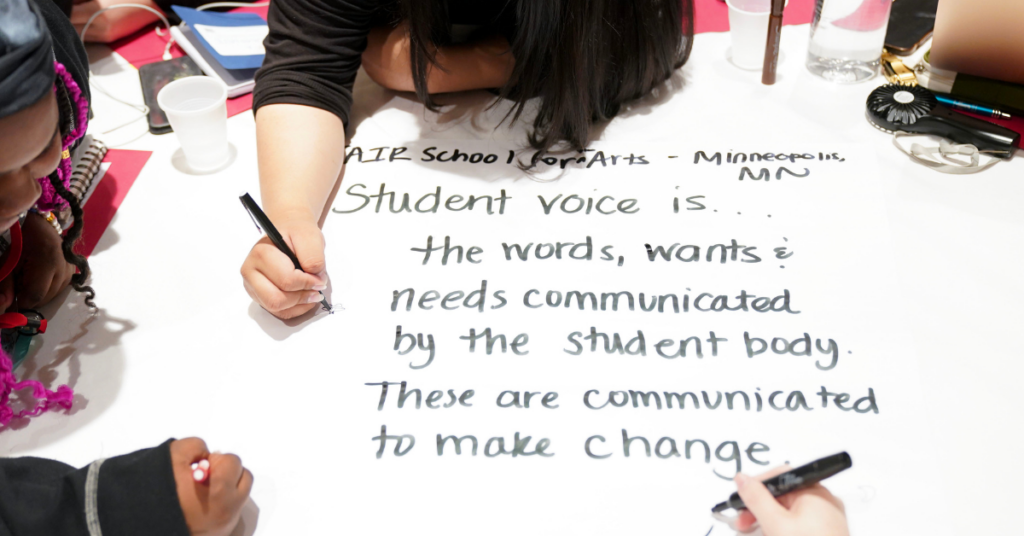The relationship between a principal and the student council is a strategic one that plays a vital role in shaping the overall educational experience and fostering a positive school culture. With the principal as the school leader and the student council representing the student body, a positive alliance steeped in collaboration and shared vision enhances communication, promotes student engagement, and drives positive change throughout the school community. As the school year begins, remember these four strategies to nurture your principal-student council relationship and enhance the educational journey.
- Empower Students. Student empowerment doesn’t happen organically. Rather, empowerment is cultivated as student leaders grow in their understanding of school issues, their responsibilities, and the value of their voices. When you as a school leader, empower student council members to take on a broader scope of responsibilities in their leadership roles, including giving them a seat at the table for discussions and decisions having a direct impact on students, they can engage in invaluable opportunities to develop crucial life skills such as teamwork, public speaking, and problem-solving. Principals can also help students develop self-confidence and cultivate a sense of ownership over their education and school community by entrusting responsibility and encouraging autonomy. This empowerment leads to greater student engagement, as students actively contribute their unique perspectives, talents, and ideas.
- Make Time for Mentoring. Principals who establish a strong relationship with their student council serve as mentors, offering support, encouragement, and guidance. Mentoring also affords principals opportunities to model their leadership skills to help student council members develop their own styles and skills as leaders, promote personal growth, and prepare for future roles and responsibilities. Principals as mentors also strengthen the overall student council, fostering continuity and sustainable empowerment within the council culture.
- Open Lines of Communication. A robust principal-student council relationship fosters open lines of communication, allowing for the exchange of ideas, concerns, and suggestions. Student leaders are not only aware of the goings on among the student body, they’re also the beating heart of the school. By actively engaging with the student council, principals gain valuable insights into student perspectives, needs, and aspirations. In turn, students feel heard, respected, and valued as equal stakeholders in the decision-making process on topics and issues that have implications for or a direct impact on students. Engaging student leaders creates a sense of trust, where council members feel that their roles, perspectives, and experiences are valued, leading to enhanced satisfaction and a stronger sense of belonging within the school community.
- Involve Students in Decision-Making. By involving students in discussions related to curriculum, extracurricular activities, and school policies, principals have a mechanism for gaining valuable insights into student needs and interests. For students, their engagement in such discussions translates into lasting leadership and civic experiences while gaining a deeper understanding of the nuances and challenges of school-centered decision-making. The strategy ensures that student voices are adequately represented and heard in important school matters. This type of engagement becomes a platform for students to express their concerns and opinions. Principals can then factor those into decisions that better align with the interests of the student body. In a more fundamental sense, involving students in the decision-making process allows for a more informed approach to tailoring educational programs and initiatives that will effectively meet students’ diverse needs, ultimately improving overall school climate and student outcomes.

Principals are acutely aware of the direct correlation of school culture to climate and the critical importance of both to student success. When you as a school leader actively engage with the student council, you demonstrate your commitment to promoting inclusivity, respect, and tolerance, ultimately setting an example for the entire school community to emulate.
Maybe the best way to define the principal-student council relationship is to call it an alliance—an alliance that has valuable benefits for both sides and the potential to significantly impact the educational journey of all students in the school. As we increasingly recognize the importance of student voice and agency in education, fostering such an alliance emerges as a key component in creating a positive school climate where a vibrant, inclusive, and successful learning community will thrive and grow.
Learn more at natstuco.org.

